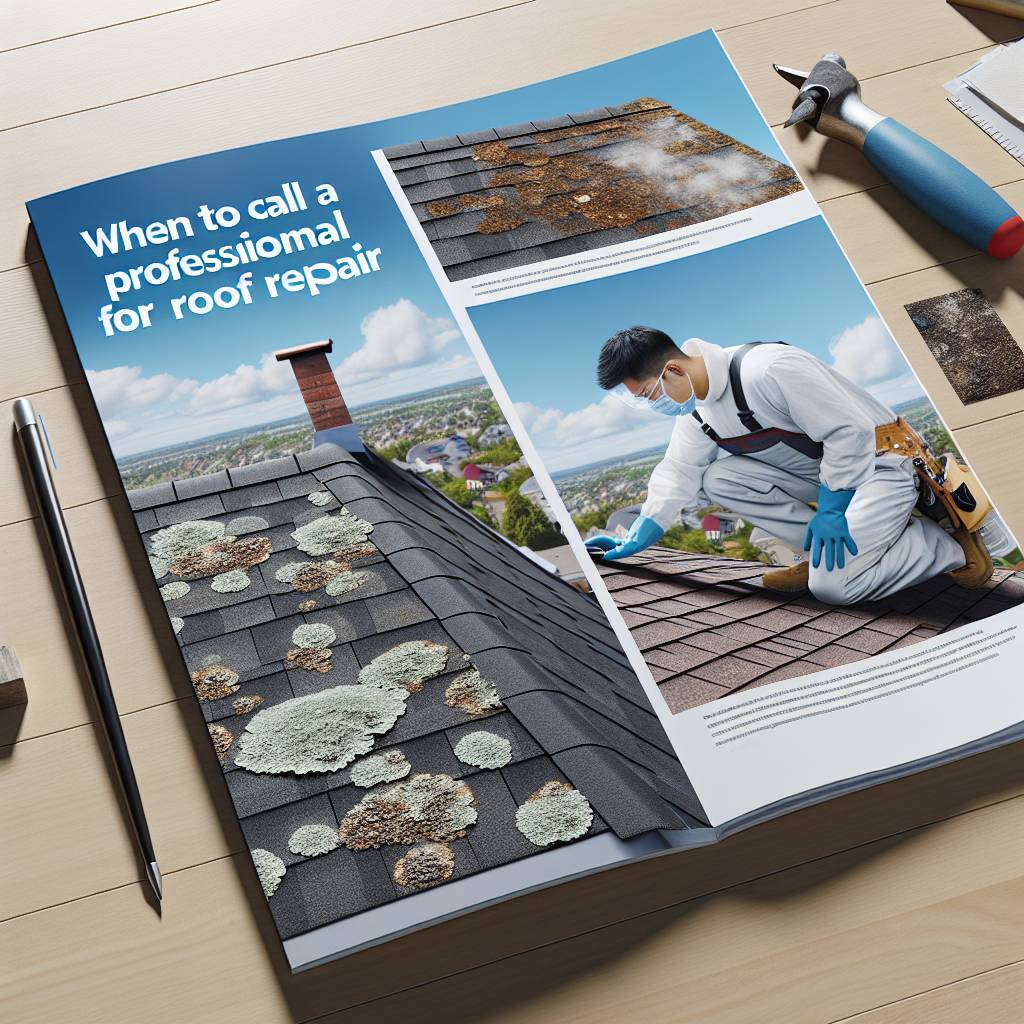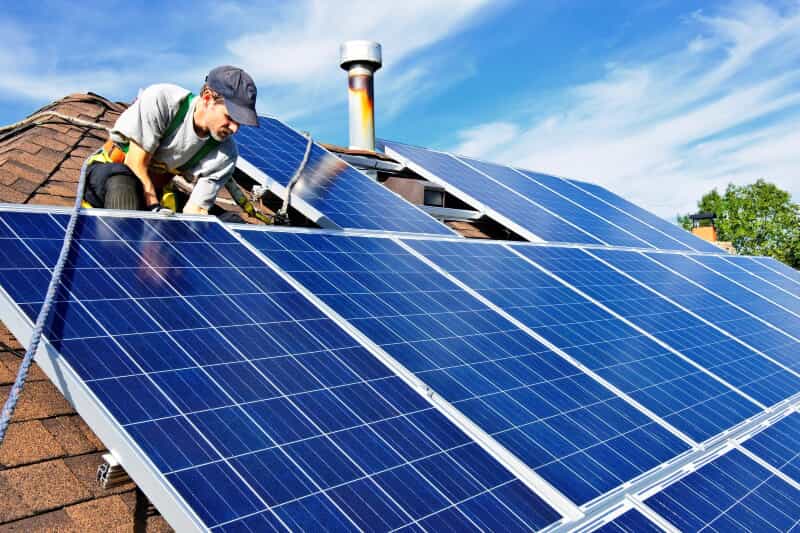Dealing with lichen on your roof can be a daunting task. While DIY methods might seem cost-effective, they often fall short in providing a long-term solution. Knowing when to call in professionals is crucial for maintaining the integrity of your roof. In this post, we’ll explore the signs that indicate it’s time to bring in expert help for rooftop lichen removal and roof repair.
Unraveling common misconceptions about DIY solutions versus professional intervention will shed light on the benefits of seeking specialized assistance when you need a contractor to solve a problem in the spring. We’ll delve into the risks associated with neglecting lichen growth and how timely professional attention can prevent extensive damage. By understanding these key indicators, you’ll gain valuable insights into safeguarding your home against potential roofing issues.
Key Takeaways
- Regularly inspect your roof for lichen, mold, and moss as they can cause damage over time.
- Look out for signs of serious roof damage caused by lichen growth, such as shingle deterioration or water leaks.
- Algae and mold can significantly reduce the lifespan of your roof, so it’s important to address them promptly.
- Consider calling a professional for roof repair if you notice extensive lichen, mold, or moss growth, or if you’re unsure about the extent of the damage.
- Professional lichen removal and roof restoration services can effectively eliminate the growth and restore the integrity of your roof.
- Prevent future lichen and moss growth by ensuring proper ventilation, removing overhanging branches, and keeping the roof clean.
Understanding Lichen and Its Effects on Roofing
What is Lichen?
Lichen is a combination of algae and fungi that can grow on roofs. It thrives in damp, shaded areas and often appears as green or grayish patches. This organic growth of fungus, algae, and mould may seem harmless at first, but it can cause significant damage to roofing materials over time.
Lichen’s root-like structures, fungus, algae, and mould penetrate the surface of the roof, leading to discoloration and even deterioration of the roofing material. As lichen spreads, it can compromise the integrity of shingles or tiles, resulting in potential leaks and structural issues.
The Impact of Lichen Growth
When lichen, algae, and mould take hold on a roof, their presence goes beyond mere aesthetics. The combination of algae and fungi not only discolors the roof but also retains moisture against the surface. This prolonged dampness creates an environment conducive to further biological growth, exacerbating the problem.
Understanding how lichen behaves biologically is crucial for effective removal and prevention strategies. By recognizing its composition and mode of operation, homeowners can grasp why professional intervention might be necessary for complete eradication of roof algae and mould.
Recognizing Signs of Lichen, Mold, and Moss Damage
Identifying Lichen Growth
Lichen growth on a roof can manifest as green or gray patches, which are clear signs that the roof is being affected by lichen. These mould and algae patches may appear small at first but can quickly spread across the roofing material. If left untreated, lichen growth can lead to structural damage and compromise the integrity of the roof.
Lichen’s root-like structures penetrate and break down roofing materials over time, causing them to deteriorate. This deterioration weakens the roof’s ability to protect against environmental elements such as rain, wind, and algae. Therefore, it is crucial for homeowners to promptly address any signs of lichen growth on their roofs.
Detecting Mold and Algae Damage
When inspecting a roof for mold or algae damage, look out for black streaks or spots on the surface. These dark stains are indicative of mold or algae infestation caused by excessive moisture retention. It’s important to note that these algae organisms thrive in damp environments created by organic debris accumulation and shaded areas on the roof.
Mold not only affects the appearance of a roof but also poses health risks due to its release of airborne spores into a home’s environment. Prolonged exposure to mold-infested roofing materials and algae can result in potential structural issues if left unaddressed.
Understanding Moss Growth Effects
The presence of moss on a roof should be cause for concern as it has adverse effects such as water retention leading to potential roof deterioration. Moss and algae tend to retain moisture which accelerates wear and tear on roofing materials over time.
Furthermore, moss creates an ideal habitat for pests such as insects that feed off decaying plant matter found within it. This could potentially attract pests onto your property and create additional problems beyond just damaging your rooftop with algae.
Identifying Serious Roof Damage from Lichen Growth
Penetrating Roofing Materials
Lichen, a combination of algae and fungi, can penetrate roofing materials, causing serious damage. As lichen grows on the roof surface, it secretes acids that deteriorate the shingles or tiles. This can lead to water leaks and compromise the structural integrity of the roof, causing algae growth. If left unaddressed, this could result in costly repairs.
Regularly inspecting your roof for signs of lichen growth is crucial in preventing severe damage. Look out for discolored patches caused by algae on the roof surface and any areas where moisture may be accumulating. Catching these issues early can save you from major repair expenses down the line.
Cracked or Lifted Shingles
One clear indication of severe lichen infestation is cracked or lifted shingles. When lichens and algae take hold under shingles or tiles, they create an environment where moisture accumulates, leading to decay and weakening of the roofing material underneath. This compromises its ability to protect your home from weather elements such as rain and snow.
If you notice any cracked or lifted shingles, algae during your regular roof inspections, it’s important to address this issue promptly before it escalates into more extensive damage.
Regular Roof Inspections
Inspecting your roof regularly is essential for catching lichen and algae damage before it worsens. By staying proactive with maintenance checks every few months, homeowners can identify early signs of lichen growth and prevent further escalation of potential structural problems caused by these organisms.
During these inspections, pay close attention to any discoloration on your roof’s surface that might indicate mosses, lichens, or algae taking root there. These small steps taken at regular intervals will help avoid significant repair costs associated with severe instances of lichen infestations damaging roofing materials.
The Impact of Algae and Mold on Roof Longevity
Deterioration Over Time
Algae and mold, often found in the form of roof algae, can gradually deteriorate roofing materials. This growth thrives in humid environments and can spread across the roof’s surface, causing discoloration and unsightly black streaks. If left unaddressed, roof algae buildup can weaken shingles over time.
Regular cleaning is essential to prevent algae growth from compromising the integrity of your roof. When moisture becomes trapped beneath these roof algae, it creates an environment conducive to rotting. As a result, the structural stability of your roof may be compromised.
Extending Roof Lifespan
Proactive measures such as regular cleaning and maintenance are vital for extending the lifespan of your roof. By addressing issues related to algae promptly, you can prevent extensive damage that may necessitate costly repairs or even premature replacement.
One way to combat algae growth is through periodic cleaning with a solution specifically formulated for this purpose. Ensuring proper ventilation in your attic space helps minimize moisture accumulation on the underside of the roof.
When to Call a Professional for Roof Repair
Extensive Damage
If lichen, mold, or moss have caused extensive damage to your roof, it’s time to call in a roofing professional. These issues can weaken the integrity of your roof and compromise its ability to protect your home. A professional will assess the extent of the damage caused by roof algae and recommend the necessary repairs.
When left unchecked, lichen can penetrate deep into roof shingles, causing them to deteriorate over time. This deterioration caused by roof algae can lead to leaks and structural damage if not addressed promptly. Calling a professional at this stage is crucial for preventing further harm to your roof.
Expertise and Equipment
Professionals possess the expertise and equipment required for safe and effective lichen removal from your roof. They understand the best practices for removing lichen and roof algae without causing additional damage to the shingles or underlying structure. They have access to specialized cleaning solutions that can eradicate lichen growth while preserving the integrity of your roof.
A DIY approach may not effectively eliminate all traces of lichen and roof algae, leaving room for regrowth and potential future damage. By enlisting the services of a qualified roofing professional, you ensure that every trace of lichen is thoroughly removed without compromising the condition of your roof.
Prevent Further Damage
Promptly addressing roof issues with professional help can prevent further damage down the line. A timely intervention by a roofing expert can stop existing problems from escalating into more severe issues that require costly repairs or even a full replacement.
Professional Lichen Removal and Roof Restoration
Specialized Cleaning Solutions
Professional lichen removal involves the use of specialized cleaning solutions designed to effectively eliminate lichens without causing damage to the roof. These solutions are specifically formulated to target lichen growth, ensuring thorough removal while preserving the integrity of the roofing materials.
When lichens are left untreated, they can penetrate and damage the surface of the roof, leading to potential leaks and structural issues. By hiring professionals for lichen removal, homeowners can benefit from these specialized cleaning solutions that not only eradicate existing lichens but also prevent regrowth in the future.
The application of these professional-grade cleaning solutions ensures a comprehensive approach to addressing lichens on roofs, safeguarding against any potential long-term damage caused by their presence.
Roof Restoration Techniques
In addition to professional lichen removal, experts in roof restoration employ techniques aimed at repairing any damage caused by lichen growth. This may involve repairing or replacing damaged shingles or tiles, addressing weakened areas where lichens have taken root, and restoring the overall condition of the roof.
Roof restoration professionals have extensive knowledge and experience in identifying areas affected by lichens and implementing appropriate repairs. They possess the expertise needed to assess any underlying issues stemming from prolonged exposure to lichens, such as water infiltration or compromised structural integrity.
Preventing Future Lichen and Moss Growth
Regular Maintenance
Regular roof maintenance is crucial in preventing lichen growth. Cleaning gutters, for example, helps to avoid water buildup which can create a conducive environment for lichen and moss to thrive. By keeping the gutters clean, you prevent moisture from accumulating on your roof.
Trimming overhanging branches is another essential step in preventing lichen growth. These branches provide shade and trap moisture on the roof, creating an ideal habitat for lichens and mosses. By cutting back these branches, you reduce the amount of shade and moisture that reaches your roof.
Inhibiting Growth with Zinc or Copper Strips
Applying zinc or copper strips along the ridge of your roof can be effective in inhibiting lichen and moss growth. These metals release ions that are toxic to lichens and other organisms that cause stains on roofs. As rainwater runs over these metal strips, it carries small amounts of these ions down the surface of the roof, preventing regrowth of lichens.
In addition to regular maintenance practices such as cleaning gutters and trimming overhanging branches, installing zinc or copper strips can significantly reduce future lichen growth on your roof.
Importance of Safe Roof Cleaning Techniques
Gentle Cleaning Methods
Using gentle cleaning methods is crucial when considering lichen removal and roof repair. Harsh techniques can lead to unnecessary damage to the roof, which may result in additional repairs. By opting for gentle cleaning solutions, homeowners can effectively remove lichen without compromising the integrity of their roofs.
Professional cleaners often utilize specialized cleaning solutions that are effective yet safe for the roof’s surface. These solutions are designed to target lichen and moss while being gentle on the underlying roofing materials. For instance, eco-friendly cleaners containing ingredients like oxygen bleach can effectively break down lichen and moss without causing harm to the shingles or tiles.
Avoiding pressure washing is paramount in ensuring a safe and successful lichen removal process. While pressure washing may seem like a quick fix, it can actually dislodge shingles and exacerbate existing damage. Instead, opting for non-invasive methods such as soft brushing or low-pressure rinsing can effectively eliminate lichen while preserving the structural integrity of the roof.
Safety Protocols
Professional roof cleaners adhere to strict safety protocols to safeguard both themselves and the roofs they work on during lichen removal processes. They utilize safety equipment such as harnesses, helmets, and non-slip footwear to prevent accidents while working at heights.
Professional cleaners are well-versed in industry best practices for working on various types of roofs, from asphalt shingle roofs to tiled surfaces. This knowledge allows them to navigate different roofing materials with care and precision, minimizing any potential damage during lichen removal procedures.
Moreover, professionals have access to advanced tools that enable them to reach difficult areas without compromising safety or causing harm to the roof’s structure. For example, telescopic wands equipped with gentle spray nozzles allow them to target specific spots where lichen has taken hold without resorting to aggressive cleaning methods that could compromise the roof’s condition.
Roof Maintenance Tips for Homeowners
Signs of Growth
Inspecting the roof regularly helps in identifying lichen, mold, or moss growth. These organisms can damage the roof’s surface, leading to leaks and other issues. Look for greenish patches or discoloration on the roof.
Noticing these signs early allows homeowners to address them promptly before they cause more significant problems. For instance, lichen can retain moisture against the rooftop, accelerating wear and tear over time.
Debris buildup on the roof provides an ideal environment for lichen growth. Regularly removing leaves and other debris is crucial in preventing its development.
Importance of Professional Inspections
Scheduling professional inspections is essential for catching roofing issues early. A qualified contractor can identify lichen growth and recommend appropriate removal methods.
Professional maintenance not only ensures that any existing lichen is addressed but also helps prevent its recurrence through effective cleaning techniques.
Moreover, professionals are equipped with knowledge about different roofing materials and how best to treat them without causing damage during routine maintenance processes such as lichen removal.
Final Remarks
So, if you’ve noticed lichen, mold, or moss on your roof, don’t ignore it. These seemingly harmless growths can lead to serious damage if left unchecked. Knowing when to call a professional for roof repair is crucial in preventing costly issues down the line. Whether it’s lichen removal or addressing mold and algae, taking action sooner rather than later can save you from more extensive and expensive repairs in the future. Remember, your roof is like a shield for your home, and keeping it clean and well-maintained is essential for its longevity.
Take the necessary steps to address any signs of lichen, mold, or moss damage on your roof. By doing so, you’ll not only protect your investment but also ensure a safe and secure home for you and your family. Don’t hesitate to reach out to professionals for assistance when needed. Your proactive approach today will save you from headaches tomorrow.
Frequently Asked Questions
When should I consider calling a professional for lichen removal and roof repair?
If you notice signs of lichen, mold, or moss on your roof, it’s best to call a professional for inspection. They can assess the extent of the damage and recommend the necessary steps to repair and prevent future growth.
How does lichen impact the longevity of my roof?
Lichen can cause serious damage to your roof by deteriorating shingles and creating an environment for moisture retention. This can lead to structural issues if left untreated. Professional removal and restoration are essential in preserving the integrity of your roof.
What are some preventive measures against future lichen and moss growth?
Regular maintenance such as keeping gutters clean, trimming overhanging branches, and ensuring proper ventilation can help prevent lichen and moss growth. Using zinc or copper strips along the ridge line can inhibit their regrowth.
Why is it important to use safe roof cleaning techniques?
Using harsh chemicals or aggressive cleaning methods can cause more harm than good by damaging shingles or compromising their integrity. Gentle yet effective cleaning techniques ensure that your roof is properly maintained without causing unnecessary damage.
How do I recognize signs of serious damage from lichen growth on my roof?
Look out for discolored patches on your roofing material, raised areas where lichens are present, or any signs of water infiltration inside your home. These could indicate substantial damage that requires immediate attention from a professional roofer.
What role does algae and mold play in impacting my roof’s condition?
Algae and mold not only affect the aesthetic appeal but also contribute to premature deterioration of roofing materials. Their presence indicates excess moisture which compromises the structural integrity of the roof if not addressed promptly.






